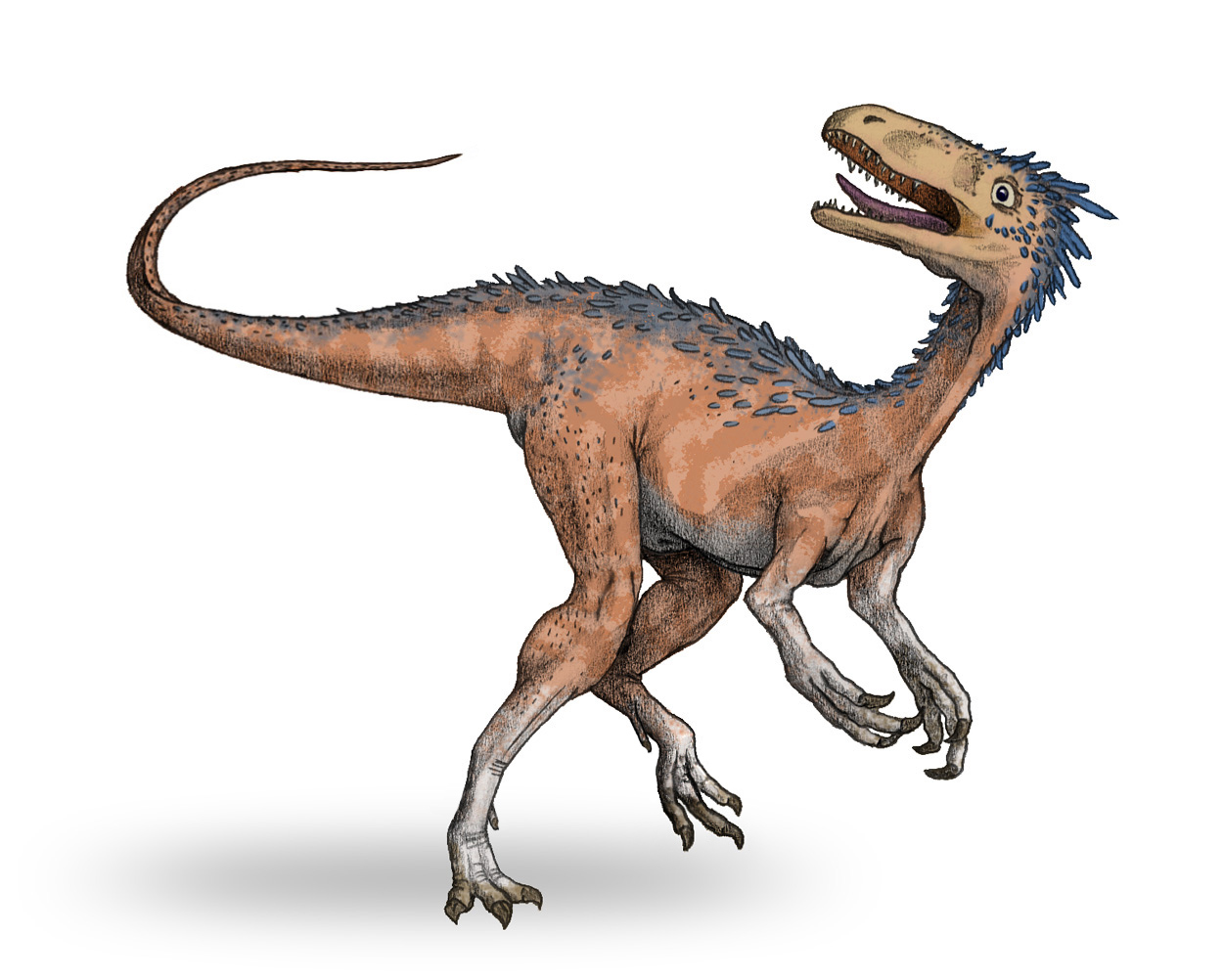- Huaxiagnathus
Taxobox

name = "Huaxiagnathus"
fossil_range =Early Cretaceous
regnum =Animal ia
phylum = Chordata
classis = Sauropsida
superordo =Dinosaur ia
ordo =Saurischia
subordo =Theropoda
familia =Compsognathidae
genus = "Huaxiagnathus"
genus_authority = Hwang "et al.", 2004
subdivision_ranks =Species
subdivision =
* "H. orientalis" Hwang "et al.", 2004 (type)"Huaxiagnathus" is a
genus oftheropod dinosaur from the LowerCretaceous ofChina . It was a compsognathid, large for that family at about half a meter longer than "Compsognathus " and larger specimens of "Sinosauropteryx ", with the largest specimen about 1.8 meters (6 feet) in length.The name "Huaxiagnathus" is derived from the Mandarin "Hua Xia", meaning "China", and Greek "gnathus", meaning "jaw."
Description
The
holotype (CAGS-IG-02-301, Chinese Academy of Geological Sciences,Beijing ) specimen was collected from theYixian Formation (Jehol Group,Barremian ) at Dabangou Village, Sihetun area, near Beipiao City, in westernLiaoning Province. The holotype consists of an essentially complete skeleton, lacking only thedistal portion of the tail, preserved on five large slabs. A second specimen (NGMC 98-5-003, National Geological Museum of China, Beijing) of "Huaxiagnathus" is known from the Yixian Formation of the Sihetun area, but damage and mistakes made during its preparation rendered it unsuitable as a holotype.Cladistic analysis indicates that "Huaxiagnathus" is the basalmost known compsognathid, as indicated by its unspecialized forearm.Hwang "et al." (2004, pp. 14-15) diagnosed this genus as follows: differing from all other known compsognathids in having a very long posterior process of the
premaxilla that overlaps the antorbitalfossa , a manus equal to the combined lengths of thehumerus and radius, large manual unguals I and II which are subequal in length and 167% the length of manual ungual III, a firstmetacarpal which has a smallerproximal transverse width than the second metacarpal, and the presence of a reducedolecranon process on theulna .Hwang, S. H., Norrell, M. A., Qiang, J., and Keqin, G. (2004). "A large compsognathid from the Early Cretaceous Yixian Formation of China." "Journal of Systematic Palaeontology", 2(1): 13-30.]References
Wikimedia Foundation. 2010.
